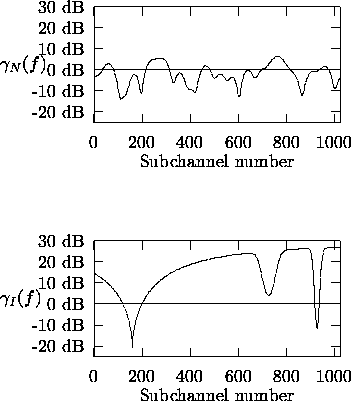
 |
JPL's Wireless Communication Reference WebsiteChapter: Network Concepts and Standards
|
Contributed by Paul G.M. de Bot and Flavio Daffara
In the coming years, the current analog television distribution will be replaced by digital distribution. The terrestrial channel poses substantial problems to the system design. This is due to the fact that the Digital Terrestrial Television Broadcasting (DTTB) system should allow large coverage for fixed receivers (with a directional roof-top antenna), and also provide the largest possible coverage for portable receivers (indoor reception with a non-directional built-in antenna). Discussions in all three European DTTB projects focus on the use of Orthogonal Frequency Division Multiplexing (OFDM).
The conventional network planning is based on fixed reception. It is shown that transmitters should increase their power by about 30 dB to offer the same service area for portable receivers. Therefore, in their introduction phase, the DTTB services will focus on fixed reception.
On noisy multipath channels, the received signal r can be modelled as
![]()
where alpham(f) is the complex attenuation factor of the channel, s is the transmitted signal, and n is a complex AWGN component with E[nn*] = N_0 In a Rayleigh fading channel, alpham(f) is complex Gaussian distributed, and frequency-dependent. So, we can define the frequency-dependent signal-to-noise ratio
![]()
If a channel suffers from Co-Channel Interference (CCI) that has a complex Gaussian amplitude distribution, the received signal can similarly be written as
![]()
where beta(f)n represents the combined CCI and AWGN.
As well as for the case of multipath propagation, we can define the frequency-dependent signal-to-noise ratio (where in this case the 'noise' is in fact interference) as
![]()
where alpha_I(f) = 1 / (f).

Figure above: Frequency transfer profile of multipath reception in an urban
area
Figure below: profile of PAL Co-Channel Interference
Hence, we can deal with CCI from PAL/SECAM in the same way as with multipath propagation. Channels suffering from CCI from PAL/SECAM as well as channels with multipath propagation will be referred to as frequency selective channels. In the following, we will use the term signal-to-noise ratio (SNR), although we mean the signal-to-noise-plus-interference ratio S/(I+N).